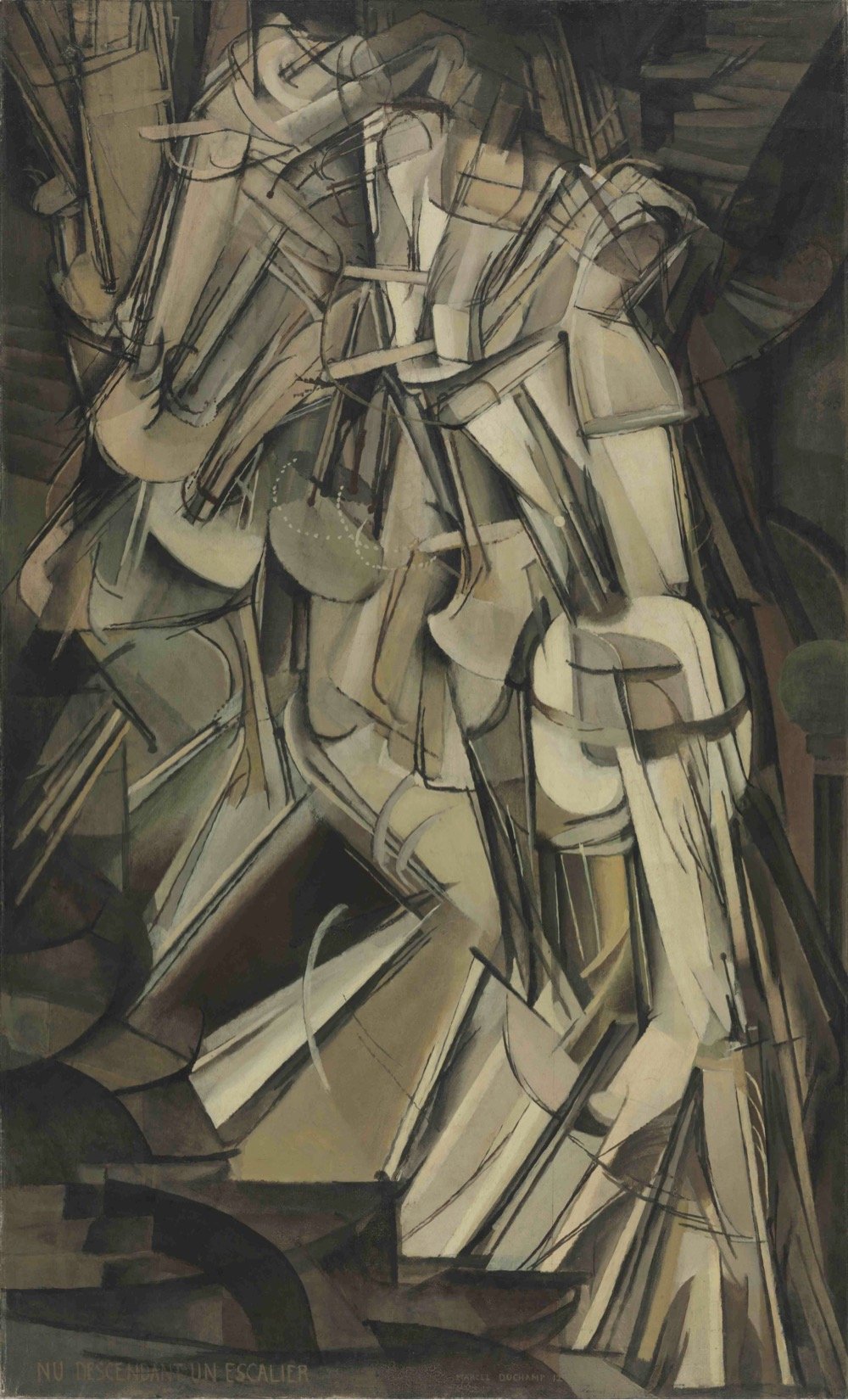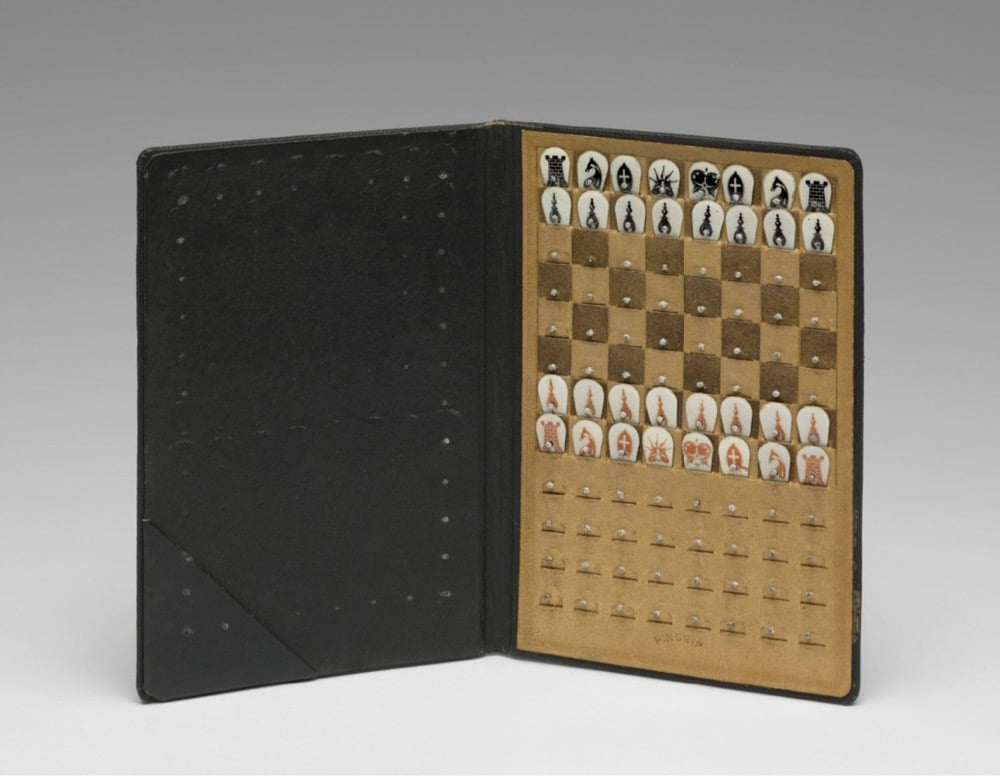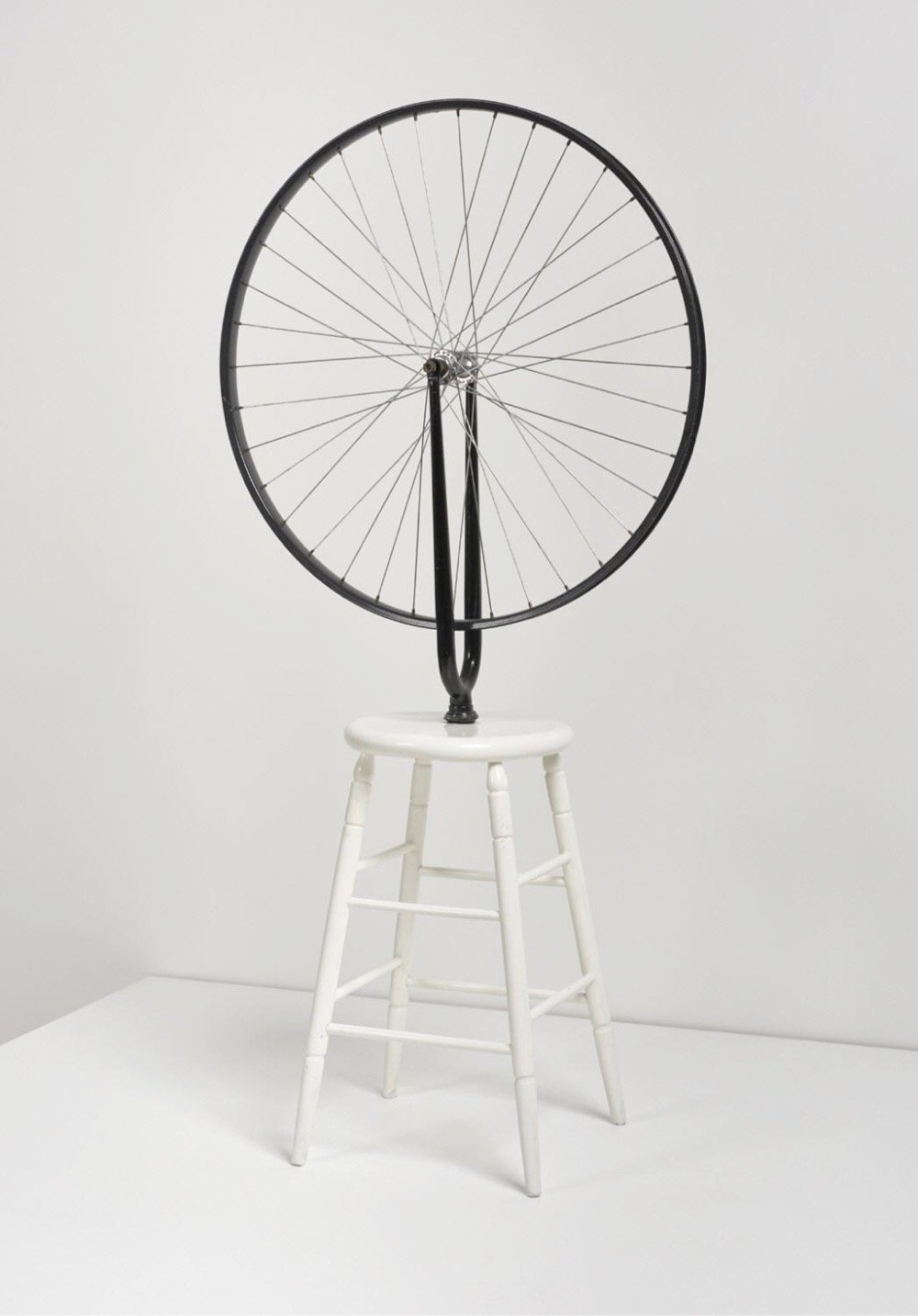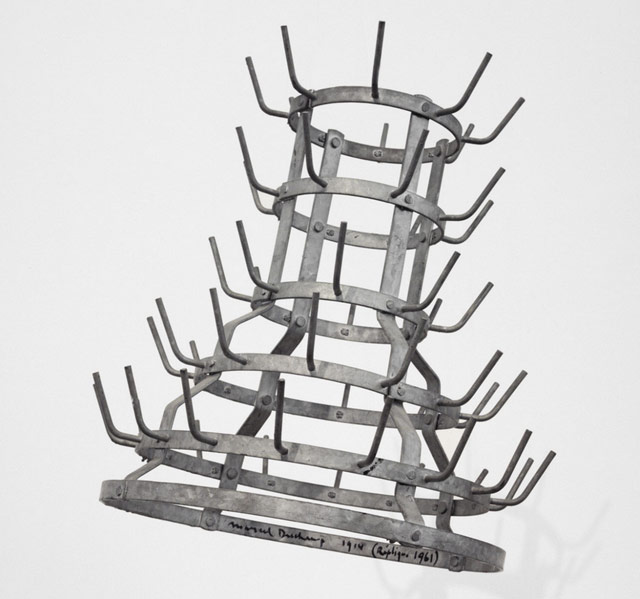kottke.org posts about Marcel Duchamp



A partnership of three institutions — the Philadelphia Museum of Art, the Association Marcel Duchamp, and the Centre Pompidou — has just launched the Marcel Duchamp Research Portal, which houses almost 50,000 images and 13,000 documents related to the life and work of Marcel Duchamp.
Sometime around 1918 in Buenos Aires, Marcel Duchamp designed a chess set:

Sometime earlier this year, Scott Kildall and Brian Sera used archival photos of the hard-to-find set, turned them into 3D models of the chess pieces, and made a pattern for 3D printing your own set:

The community at Thingaverse is already busy making interesting variations of Duchamp’s set…look at this one:

Something tells me Duchamp would have loved this whole thing.
Update: Welllllll, Duchamp may have loved this, but his estate definitely did not. Duchamp’s estate sent Kildall and Sera a cease and desist letter, forcing them to remove the 3D models from Thingiverse. Which, the irony! So, Kildall and Sera, riffing on Duchamp’s mustachioed Mona Lisa, have created a set of six 3D-printed chess pieces with mustaches modeled on the Duchamp set. Fantastic.

The very first of Marcel Duchamp’s readymades — ordinary manufactured objects that became art through a minimal artistic process — was called Bottle Rack. This is a replica housed at the Philadelphia Museum of Art:

The original piece was purchased by Duchamp at BHV, a historic Parisian department store in the 4th arrondissement. It was sold as a rack for drying bottles. Duchamp intended to finish the piece by signing his name on it, but his sister had already thrown it out.
Legend has it that Duchamp’s second readymade didn’t fare so well either. “En prévision du bras cassé” (“In advance of the broken arm”) was a snow shovel on which its title was painted. A replica of the piece was allegedly mistaken for an actual shovel at a show in Chicago and used to clear sidewalks. But perhaps Duchamp wasn’t very much put out by the mistake because the snow-clearing artist inadvertently turned the shovel into what Duchamp called a “readymade réciproque” or “reciprocal readymade”.
He said that this would be a work of art used as an everyday, readymade object, such as “using a Rembrandt as an ironing board.” The readymade took an everyday mass-produced object and treated it as art. The assisted readymade took a mass-produced reproduction of a work of art and made it into a unique commentary on that work. The reciprocal readymade took a unique work of art and treated it like a mass-produced utilitarian object.
Ah, the circle of life.













Stay Connected